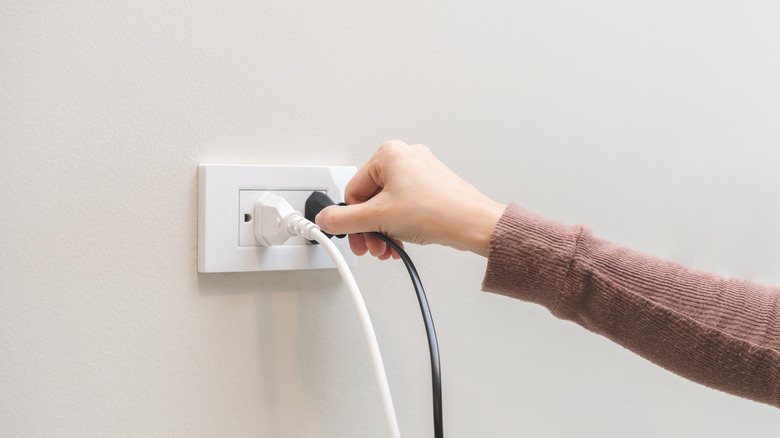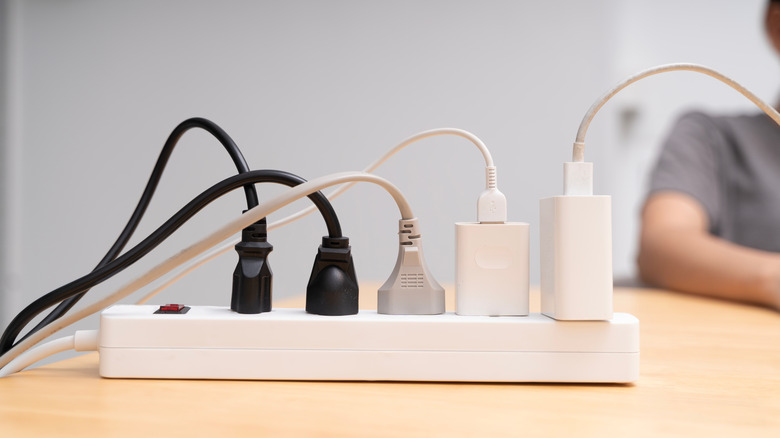To Unplug Or Not Unplug: How To Prevent Unnecessary Electricity Usage With Appliances
As the cost of everyday essentials keeps climbing — from groceries and clothing to natural gas and electricity — people are finding themselves looking for savings wherever they can. While some price hikes are unavoidable, cutting energy costs is one area where just a few small tweaks could have an impact. One common belief is that unplugging appliances can help lower your energy bills. But does it really make a difference, or is it just another old wives' tale? The short answer: it definitely helps — but it doesn't apply to all appliances.
In many instances, plugged-in appliances continue to suck energy even when they're turned off. These types of appliances are referred to as "energy vampires" —and not unplugging them can be a big mistake. According to the U.S. Department of Energy, energy vampires account for 5% to 10% of all residential energy use. Some of the worst offenders are large devices that may seem obvious, such as televisions, refrigerators, washing machines, and dryers. Others may be less so. Devices with standby lights or digital displays, like microwaves or coffee makers, are some of the biggest energy vampires. So are rechargeable devices such as cell phones, electric toothbrushes, and small power tools.
Not all appliances will continue to draw power when plugged in, however. Appliances without displays, such as manual toasters, blenders, electric kettles, or other old-school electrical devices, can remain plugged in without impacting your energy bill. The same goes for lamps, which will not use power when switched off unless they have "smart features" such as built-in Wi-Fi or Bluetooth capabilities, which use power to stay connected to a network.
Consider power strips to turn off appliances if unplugging isn't an option
If you have a lot of energy vampires in your home, the most effective way to keep your electric bills low is by unplugging these devices when they're not in use. This is a sure way to prevent unnecessary electrical usage and help keep your bills to a minimum. However, unplugging all your devices is not always possible, such as with a refrigerator. Or practical if the plug is hard to access, like with a wall-mounted TV. In other instances, you may find that constant unplugging is simply too inconvenient. If any of these are the case, there are still things you can do to minimize the amount of electricity being used.
One solution is to connect these energy suckers to power strips or smart plugs that have on/off switches. Instead of unplugging the devices, you can switch off the strip. This will turn off the devices entirely, which is a lot more convenient. Keep in mind, however, there are some items you should avoid plugging into a power strip, such as those that pull a lot of electricity, as it can cause the power strip to overload and be a potential fire hazard. If possible, you should also consider replacing some of your appliances with ENERGY STAR products. These products are more energy efficient and pull less power when items are not in use, which will help keep your electric bill a bit lower.

